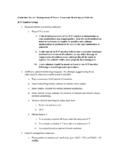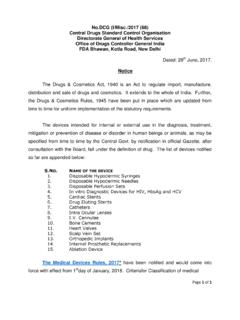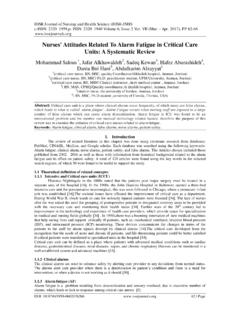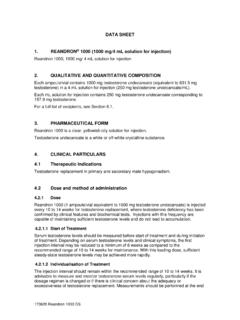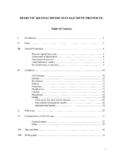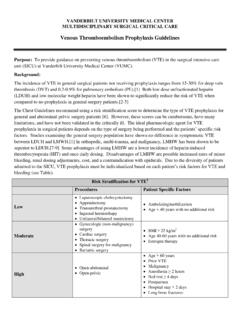Transcription of Oesophageal Doppler Monitoring using the …
1 Deltex Medical y Terminus Road y Chichester y West Sussex y PO19 8TX y Phone: +44(0)1243 774837 y Fax: +44(0)1243 532534 y Customer Service: 0845 085 0001 OOeessoopphhaaggeeaall DDoopppplleerr MMoonniittoorriinngg uussiinngg tthhee CCaarrddiiooQQ && CCaarrddiiooQQ--OODDMM WWoorrkkbbooookk ffoorr OOppeerraattiinngg DDeeppaarrttmmeenntt PPrraaccttiittiioonneerrss && TThheeaattrree SSttaaffff Deltex Medical - Workbook for ODPs and Theatre Staff Page 2 of 26 Contents 3 1. Anatomy and Physiology .. 4 Anatomy of the Heart .. 4 Physiology of the Cardiovascular System.
2 5 Questions .. 8 2. DPn and I2n General Probe 9 DPn and I2n .. 9 Contra-indications .. 10 Getting Started with the CardioQ .. 10 Getting Started with the CardioQ-ODM .. 11 Probe Insertion .. 12 Probe Focus .. 12 Additional Features .. 13 Probe Expiry .. 13 Probe Disposal .. 13 FAQs .. 14 15 3. General Information .. 16 User Features for CardioQ .. 17 User Features for CardioQ-ODM .. 18 Questions .. 19 4. Waveform Analysis .. 20 Interpreting Data .. 21 Key Results .. 21 Individualised Doppler Guided Fluid Management (iDGFM).
3 22 Examples of Doppler Waveforms .. 23 Questions .. 26 Deltex Medical Workbook for ODPs and Theatre Staff Page 3 of 26 Introduction Welcome to the Deltex Medical CardioQTM/CardioQ-ODMTMW orkbook. This workbook is designed to introduce Operating Department Practitioners and Theatre Staff to Oesophageal Doppler Monitoring using the CardioQ/CardioQ-ODM. Individualised Doppler Guided Fluid Management (iDGFM) using the CardioQ/CardioQ-ODM has been shown to reduce postoperative hospital stay and reduce complications.
4 An Oesophageal Doppler probe is inserted into the patient s oesophagus, and measures velocity of blood flow in the descending aorta. The CardioQ/CardioQ-ODM then displays a velocity/time waveform, providing information for the Clinician to safely manage the patient s fluid status during surgery. The workbook is split into 4 sections: Section 1 Anatomy & Physiology Section 2 Oesophageal Doppler Probes Section 3 The CardioQ/CardioQ-ODM Section 4 Waveform Analysis For your own benefit, we recommend that you work through Sections 1-4 in order and at your own pace, answering the questions for each section before you move on to the next section.
5 Before you start the workbook, we recommend that you have a basic understanding of Oesophageal Doppler Monitoring . It would be helpful to have an Oesophageal Doppler probe and CardioQ/CardioQ-ODM to hand to familiarise yourself with the probe and monitor. Further useful information can be found in the CardioQ/CardioQ-ODM Operating Handbook and a relevant Anatomy and Physiology textbook. If you need any further information or help with any part of the workbook, please do not hesitate to contact your Deltex Medical Clinical Trainer/Clinical Application Specialist, who will be happy to help.
6 Enjoy the workbook. Deltex Medical - Workbook for ODPs and Theatre Staff Page 4 of 26 1. Anatomy and Physiology 2. This section briefly describes the structures of the heart and key cardiodynamic definitions. Anatomy of the Heart The heart consists of 4 chambers: 2 atria and 2 ventricles. Between the chambers are valves, which stop back flow of blood. The blood flows from the vena cava to the right atrium, then into the right ventricle. It continues to the lungs where it is oxygenated. It passes to the left atrium, then the left ventricle and finally ejected into the aorta.
7 Deltex Medical Workbook for ODPs and Theatre Staff Page 5 of 26 Physiology of the Cardiovascular System It is essential that the organs and tissues be perfused with blood, so that they receive the oxygen and nutrients that they require to function. Systole This is the contraction phase of the cardiac cycle. As the left ventricle contracts, blood is ejected into the aorta. The Oesophageal Doppler monitor will detect blood flow in the descending aorta as it passes the probe tip during the systolic phase. This will be converted by the CardioQ/ CardioQ-ODM into an audible & visual waveform.
8 Diastole Diastole is the relaxation phase of the cardiac cycle. During ventricular diastole, the ventricles relax and fill with blood. At the end of diastole, the volume of blood that fills the ventricle is called the end diastolic volume. Minimal or no blood flow in the descending aorta will be detected by the Oesophageal Doppler probe during diastole. Stroke Volume The stroke volume is the volume of blood that is ejected from the left ventricle with each contraction. It is measured in millilitres. Cardiac output = Stroke volume X Heart rate. 3 factors that effect stroke volume are preload, contractility & afterload.
9 Cardiac Output Cardiac output is the amount of blood that is ejected from the left ventricle each minute. It is measured in litres/min. Preload Preload is the amount that the cardiac muscle fibres are stretched when filling. This is dependent on the end diastolic volume - the greater the volume, the greater the stretch on the muscle fibre. Stroke Volume will be low if the patient s preload is inadequate, eg hypovolaemia. Contractility Contractility is the strength of the contraction for a given preload. Patients with poor left ventricular function, will have a reduced contractility. Afterload In order for the blood to be ejected into the aorta during systole, the pressure in the left ventricle must exceed that in the aorta.
10 This high pressure causes blood to press against the aortic valve, opening it and ejecting the blood into the aorta. The pressure that must be overcome, is termed as the afterload. Vascular resistance affects the afterload. Vascular resistance depends on the diameter of systemic blood vessels. The diameter of the systemic blood vessels is affected by vasoconstriction & vasodilation. The change in vascular resistance will affect the pressure in the aorta, thus affecting the afterload. If the systemic vessels are vasoconstricted the lumen will be narrower than normal and therefore the pressure in the aorta that the ventricle must overcome will be greater.
